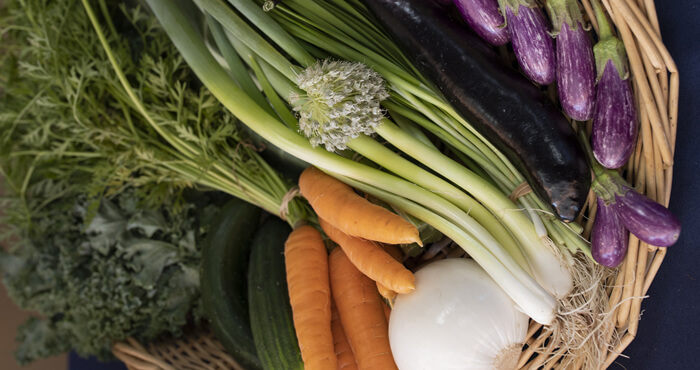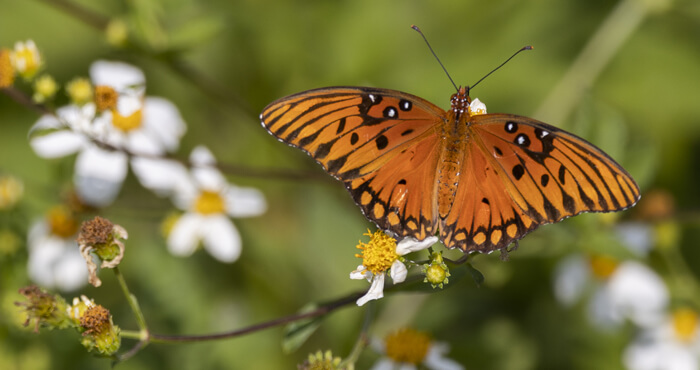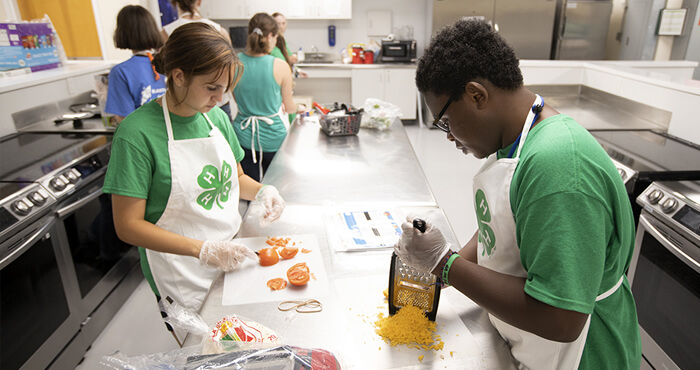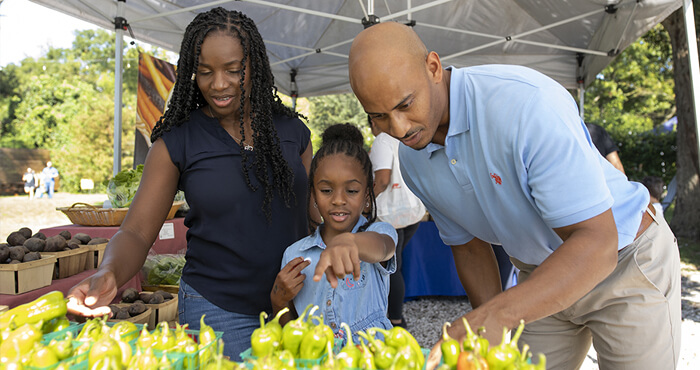
No-Dig Garden Beds
Also referred to as “sheet composting,” “sheet mulching,” or “lasagna gardening,” no-dig gardens require a layering system of compost materials to smother grass and suppress weeds. This makes an in-place garden bed once the materials have decomposed.
Benefits
Grass and weeds are buried under thick layers, making sheet composting a great tool for non-chemical weed control. As long as you don’t turn or till the surface, weeds are too deep to germinate. Improving the soil structure, as explained below, also helps to limit the advantage of weeds that often thrive in compacted, nutrient poor soils.
Since the bed preparation is essentially thick mulching, it improves moisture retention and nutrient content of the soil by adding organic material. This is a big bonus for Florida’s sandy soils. Building and maintaining no-dig garden beds is one method of no-till gardening. No-till systems are a part of conservation tillage, an important method for preserving soil integrity by minimizing erosion and increasing and maintaining soil organic matter.
This uncomplicated and easy method of sheet composting means that it’s appropriate for everyone (including those who may be physically limited or unable to dig traditional garden beds) and a good way to convert grassy areas to gardens. This leaves the sod in place where it gets converted into soil organic matter. You can also use this method to enlarge perennials borders. The process can be done at anytime and at any scale, even piecemeal as materials are available.
Building a Bed
- Plan your bed. Sheet composting is best done a few months before you want to plant so that the materials have time to decompose. Beds can be contained in a raised bed if desired (be sure to use untreated lumber).
- Mow or chop down grass and weeds in the place where you want your finished bed (or within your raised bed structure). Leave the trimmings in place.
- Cover the ground and trimmings with four to six layers of newspaper or cardboard (a light-blocking carbon source). Wet thoroughly.
- Add compost, worm castings, or manure two to three inches thick.
- Cover with a layer of carbon material such as leaves, sawdust, or straw.
- Top with another nitrogen layer of grass clippings, green weeds (no seeds), kitchen scraps, manure, or a combination of any of these.
- Continue this layering until you’ve reached the desired bed thickness (eighteen inches to three feet).
- Cover with a burlap layer or a top-dressing of bark, newspaper, or leaves.
- Water well.
Sheet composting is considered a “cold” process. It will take time to break down, the amount varying with the type and quantity of organic materials. If you want to plant before the bed is decomposed, you can add a two to three inch layer of finished compost or garden soil to the top of the bed and plant directly.
Since this method will not produce any or very much heat, it means that any weed seeds in the composting layers (above the cardboard) will not cook and will sprout in your bed. Make sure your materials are weed seed free in order to enjoy the weed control benefits of this method.
Maintaining your beds is as simple as adding new layers (a nitrogen layer, such as grass clippings, followed by a carbon layer, like leaves) to keep the bed’s height.
Resources
Other UF/IFAS Sites
- Gardening Solutions
- Entomology and Nematology Department
- Environmental Horticulture Department
- FAWN: Florida Automated Weather Network
- Florida-Friendly Landscaping™ Program
- Florida Master Gardener Program
- IPM Florida
- Pesticide Information Office
UF/IFAS Publications
- Florida-Friendly Landscaping™ Program
- Central Florida Gardening and Landscaping Fact Sheets
- Starting a Garden
State & Federal Agencies
- Florida Department of Agriculture and Consumer Services (FDACS)
- Florida Department of Environmental Protection (FDEP)
- Florida Energy Systems Consortium (FESC)
- U.S. Environmental Protection Agency (EPA)
- USDA Plant Hardiness Zone Map--U.S. National Arboretum
Organizations & Associations
- American Community Gardening Association
- American Horticultural Society
- Florida Native Plant Society
- Florida Nursery, Growers and Landscape Association (FNGLA)
- North American Native Plant Society
Other Sites & Publications
UF/IFAS Mobile Web Apps



.jpg)

.jpg)
